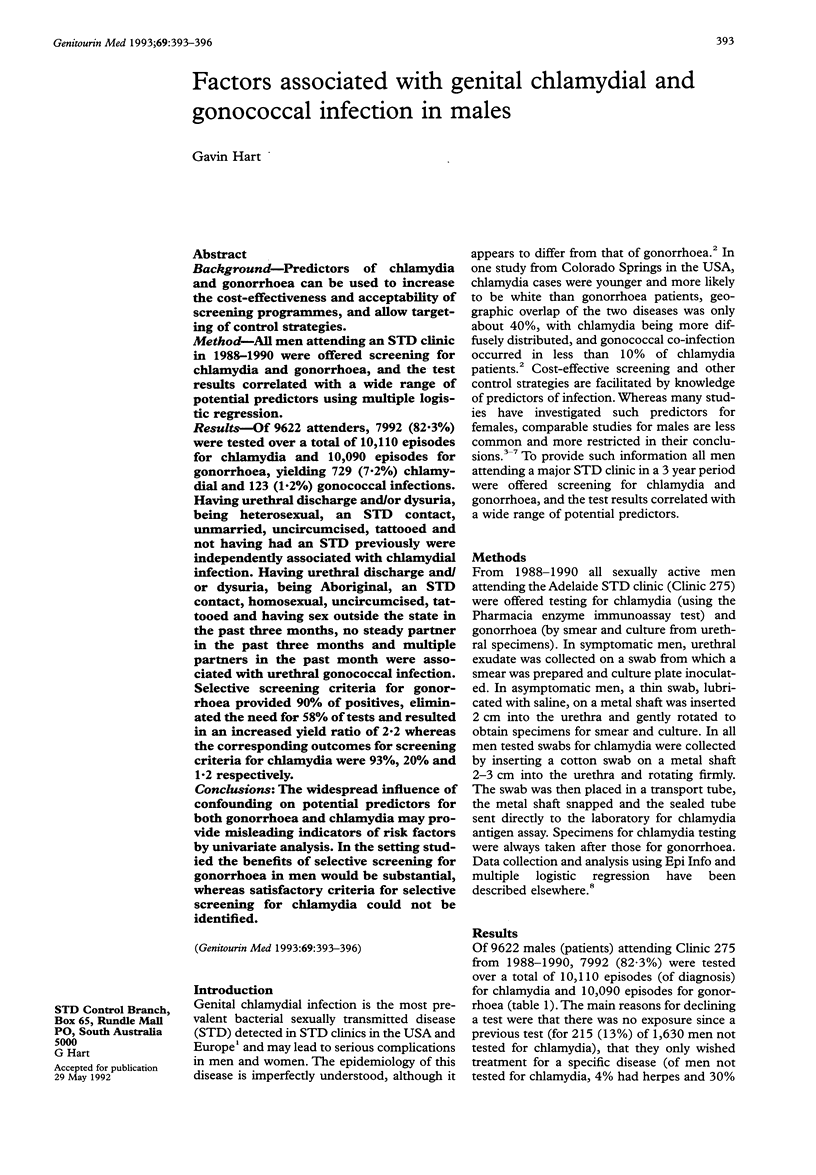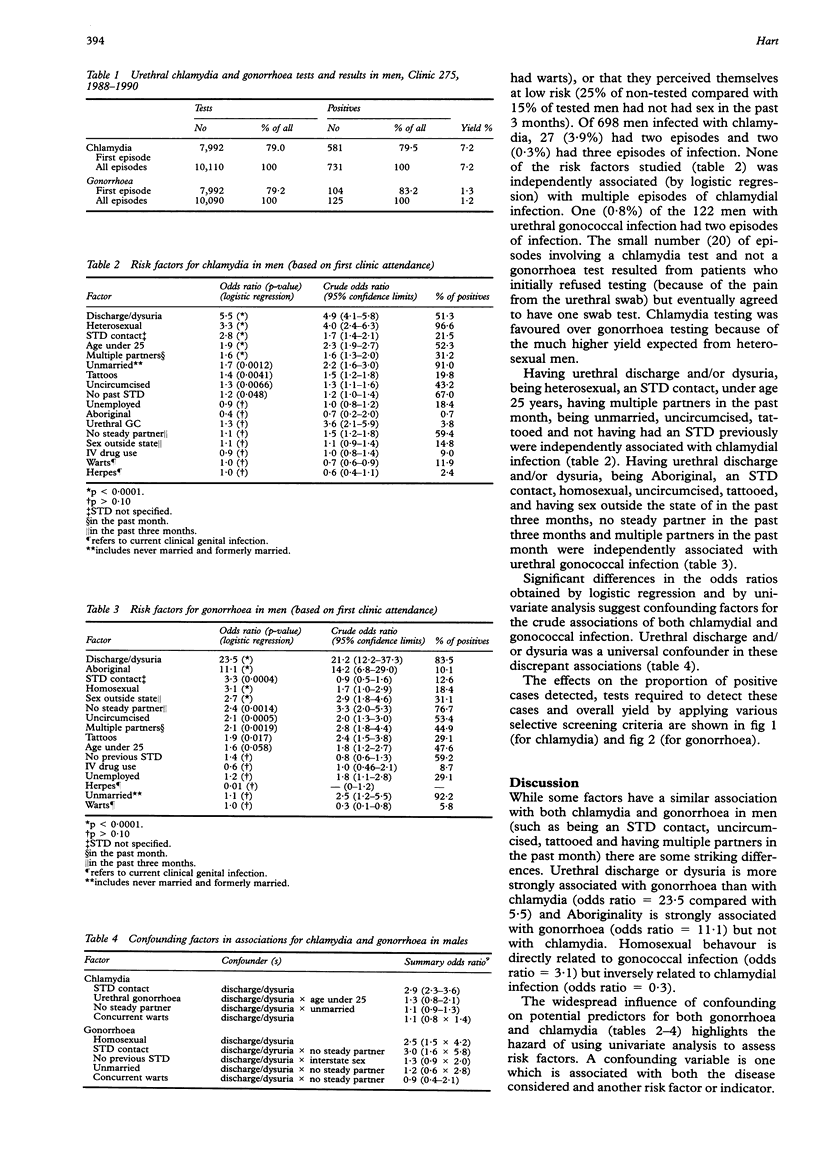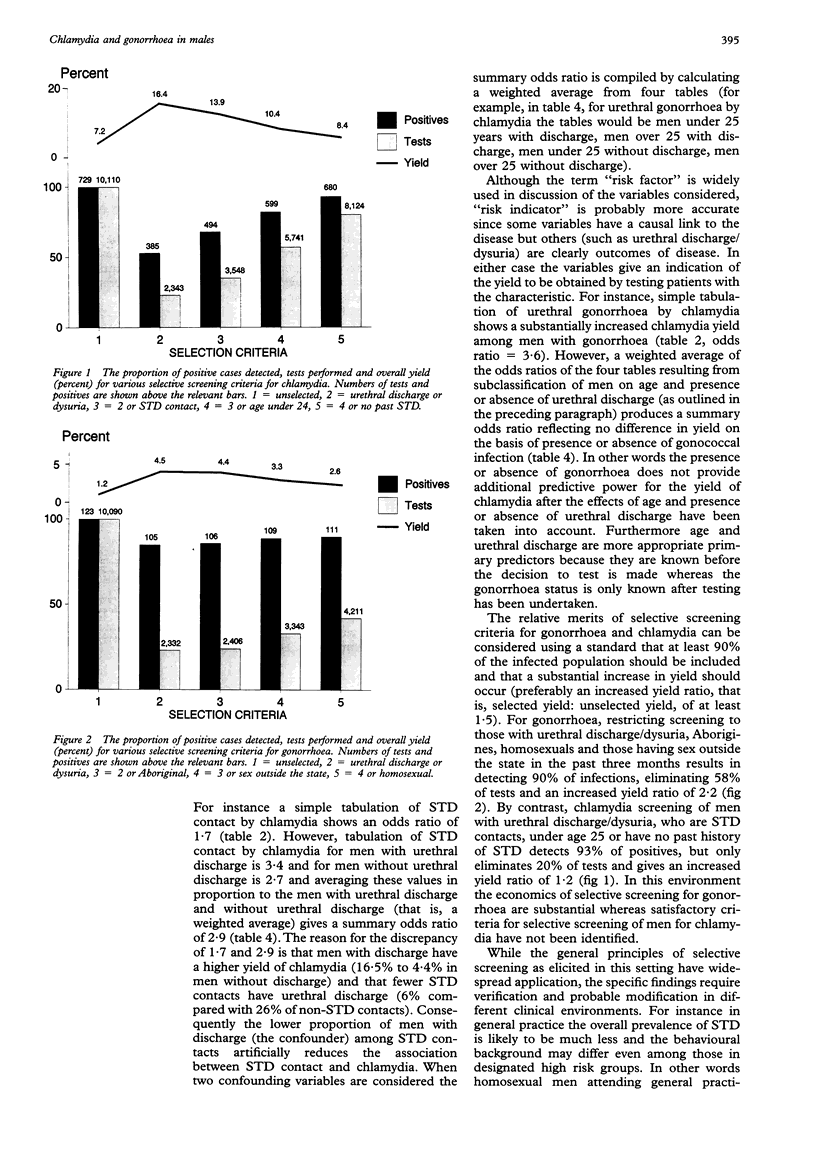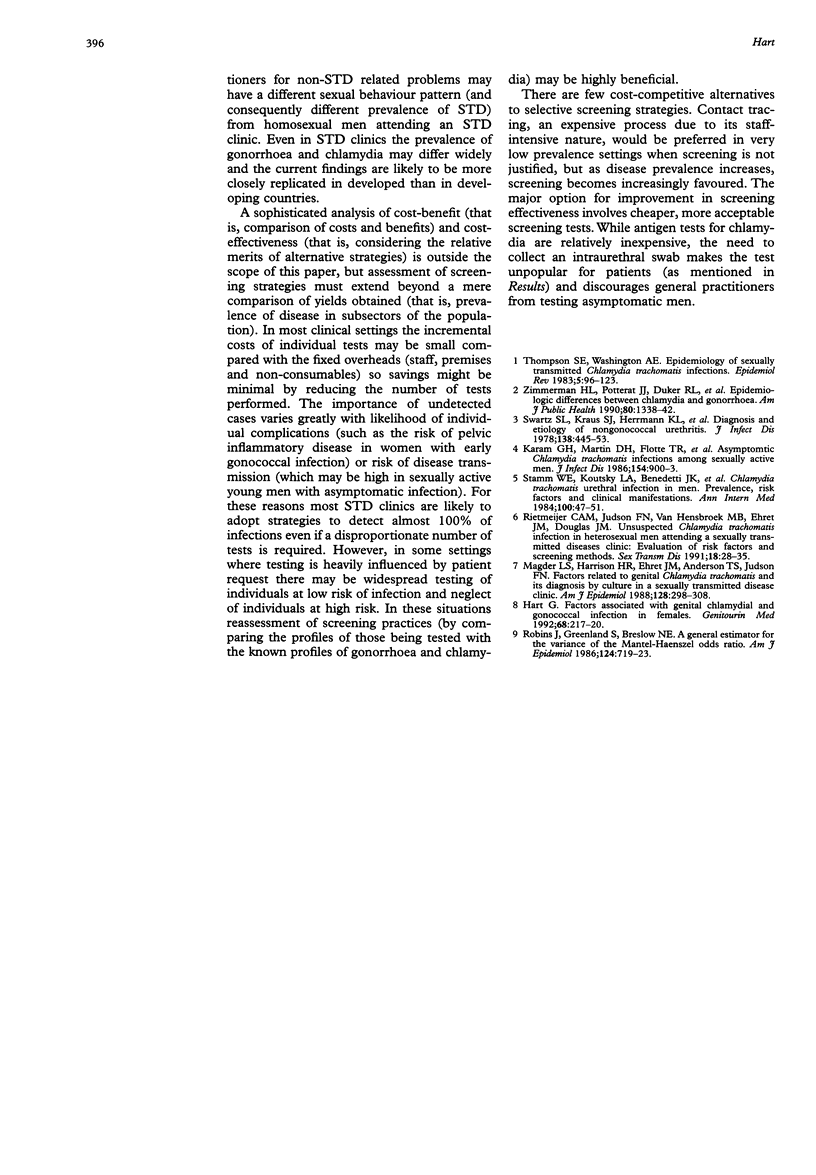Abstract
BACKGROUND--Predictors of chlamydia and gonorrhoea can be used to increase the cost-effectiveness and acceptability of screening programmes, and allow targeting of control strategies. METHOD--All men attending an STD clinic in 1988-1990 were offered screening for chlamydia and gonorrhoea, and the test results correlated with a wide range of potential predictors using multiple logistic regression. RESULTS--Of 9622 attenders, 7992 (82.3%) were tested over a total of 10,110 episodes for chlamydia and 10,090 episodes for gonorrhoea, yielding 729 (7.2%) chlamydial and 123 (1.2%) gonococcal infections. Having urethral discharge and/or dysuria, being heterosexual, and STD contact, unmarried, uncircumcised, tattooed and not having had an STD previously were independently associated with chlamydial infection. Having urethral discharge and/or dysuria, being Aboriginal, an STD contact, homosexual, uncircumcised, tattooed and having sex outside the state in the past three months, no steady partner in the past three months and multiple partners in the past month were associated with urethral gonococcal infection. Selective screening criteria for gonorrhoea provided 90% of positives, eliminated the need for 58% of tests and resulted in an increased yield ratio of 2.2 whereas the corresponding outcomes for screening criteria for chlamydia were 93% 20% and 1.2 respectively. CONCLUSIONS--The widespread influence of confounding on potential predictors for both gonorrhoea and chlamydia may provide misleading indicators of risk factors by univariate analysis. In the setting studied the benefits of selective screening for gonorrhoea in men would be substantial, whereas satisfactory criteria for selective screening for chlamydia could not be identified.
Full text
PDF



Selected References
These references are in PubMed. This may not be the complete list of references from this article.
- Hart G. Factors associated with genital chlamydial and gonococcal infection in females. Genitourin Med. 1992 Aug;68(4):217–220. doi: 10.1136/sti.68.4.217. [DOI] [PMC free article] [PubMed] [Google Scholar]
- Karam G. H., Martin D. H., Flotte T. R., Bonnarens F. O., Joseph J. R., Mroczkowski T. F., Johnson W. D. Asymptomatic Chlamydia trachomatis infections among sexually active men. J Infect Dis. 1986 Nov;154(5):900–903. doi: 10.1093/infdis/154.5.900. [DOI] [PubMed] [Google Scholar]
- Magder L. S., Harrison H. R., Ehret J. M., Anderson T. S., Judson F. N. Factors related to genital Chlamydia trachomatis and its diagnosis by culture in a sexually transmitted disease clinic. Am J Epidemiol. 1988 Aug;128(2):298–308. doi: 10.1093/oxfordjournals.aje.a114970. [DOI] [PubMed] [Google Scholar]
- Robins J., Greenland S., Breslow N. E. A general estimator for the variance of the Mantel-Haenszel odds ratio. Am J Epidemiol. 1986 Nov;124(5):719–723. doi: 10.1093/oxfordjournals.aje.a114447. [DOI] [PubMed] [Google Scholar]
- Stamm W. E., Koutsky L. A., Benedetti J. K., Jourden J. L., Brunham R. C., Holmes K. K. Chlamydia trachomatis urethral infections in men. Prevalence, risk factors, and clinical manifestations. Ann Intern Med. 1984 Jan;100(1):47–51. doi: 10.7326/0003-4819-100-1-47. [DOI] [PubMed] [Google Scholar]
- Swartz S. L., Kraus S. J., Herrmann K. L., Stargel M. D., Brown W. J., Allen S. D. Diagnosis and etiology of nongonococcal urethritis. J Infect Dis. 1978 Oct;138(4):445–454. doi: 10.1093/infdis/138.4.445. [DOI] [PubMed] [Google Scholar]
- Thompson S. E., Washington A. E. Epidemiology of sexually transmitted Chlamydia trachomatis infections. Epidemiol Rev. 1983;5:96–123. doi: 10.1093/oxfordjournals.epirev.a036266. [DOI] [PubMed] [Google Scholar]
- Zimmerman H. L., Potterat J. J., Dukes R. L., Muth J. B., Zimmerman H. P., Fogle J. S., Pratts C. I. Epidemiologic differences between chlamydia and gonorrhea. Am J Public Health. 1990 Nov;80(11):1338–1342. doi: 10.2105/ajph.80.11.1338. [DOI] [PMC free article] [PubMed] [Google Scholar]


